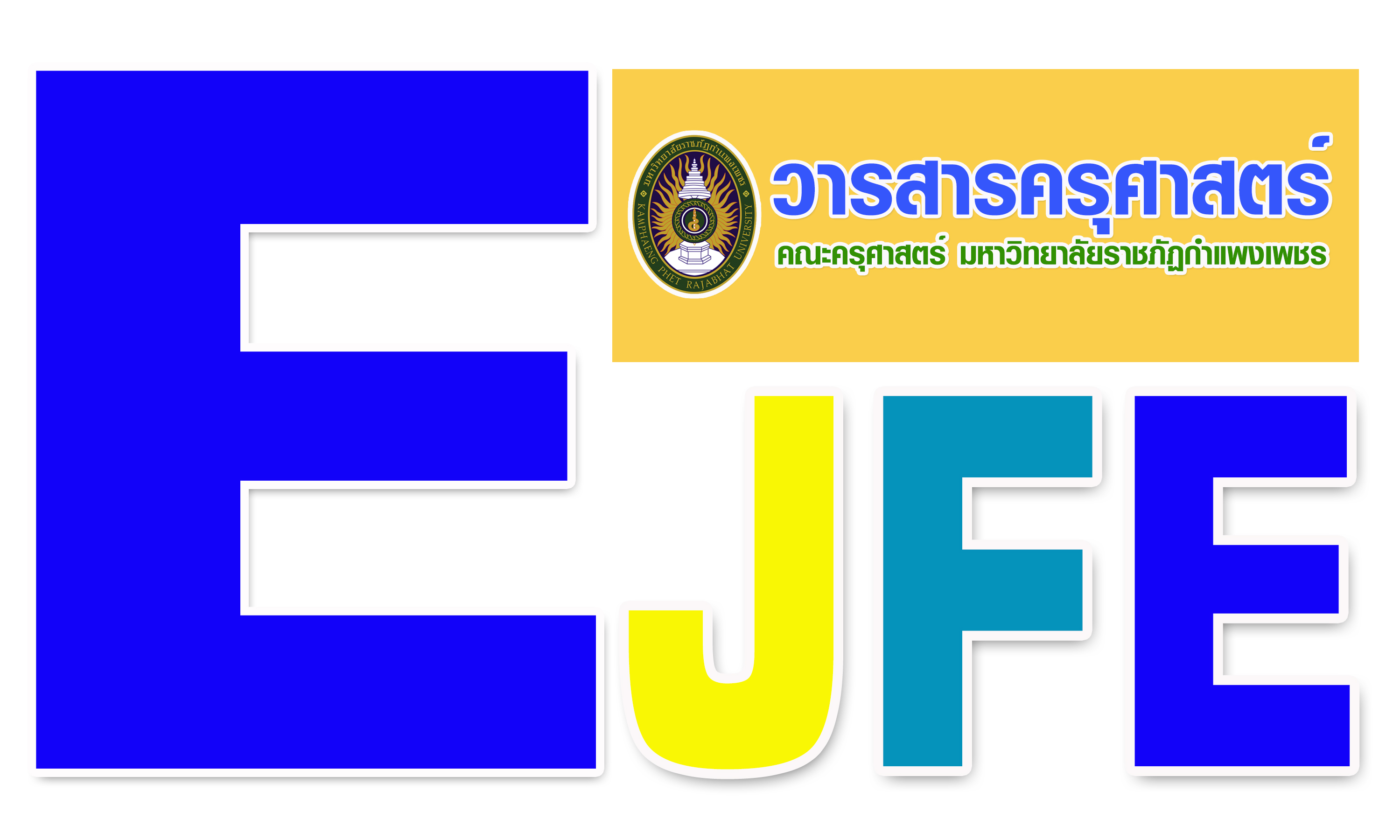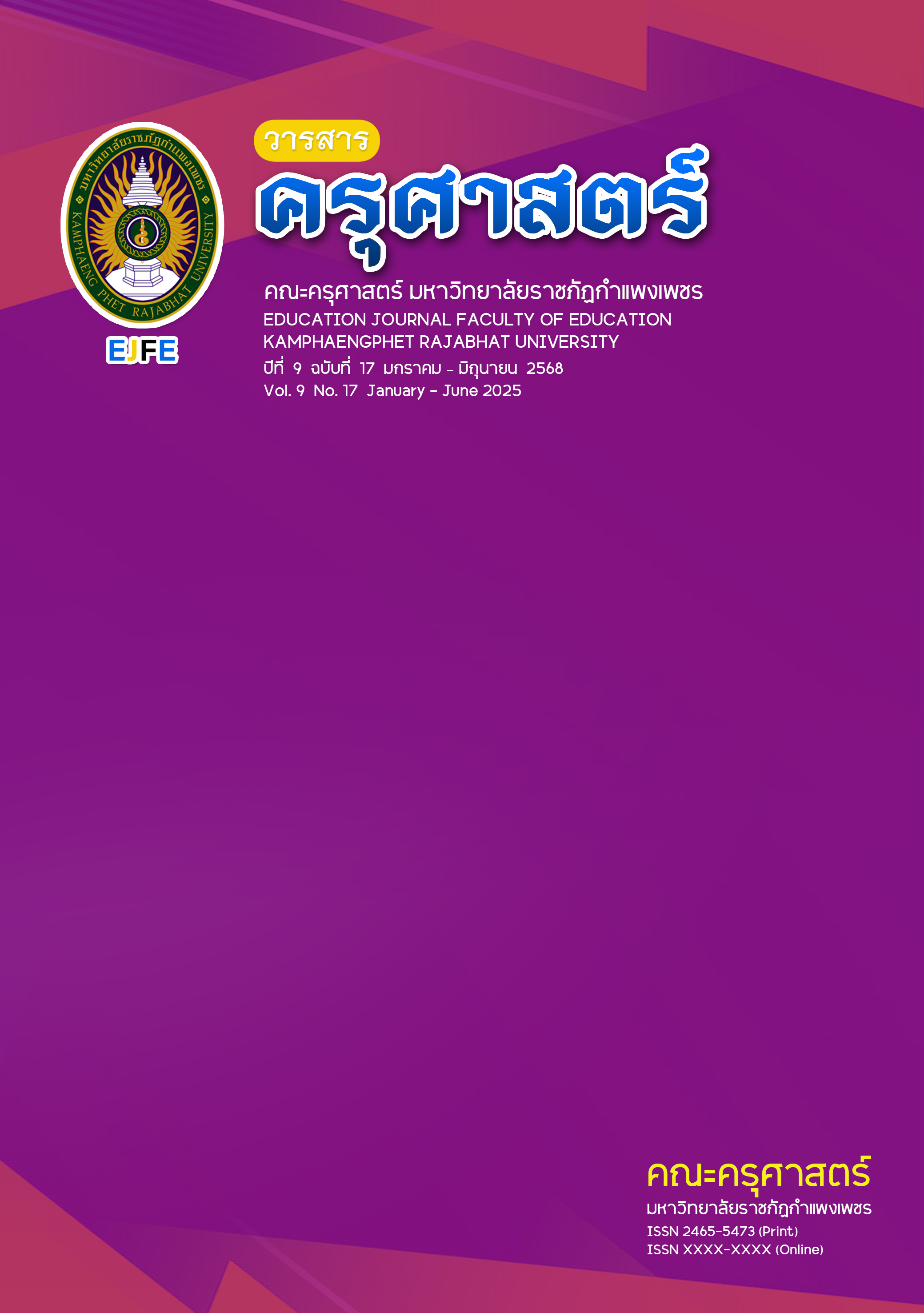ความสัมพันธ์ระหว่างภาวะผู้นำดิจิทัลของผู้บริหารสถานศึกษากับประสิทธิผล ของสถานศึกษา อำเภอทุ่งฝน สังกัดสำนักงานเขตพื้นที่การศึกษามัธยมศึกษาอุดรธานี
Main Article Content
บทคัดย่อ
การวิจัยครั้งนี้มีวัตถุประสงค์ 1) เพื่อศึกษาภาวะผู้นำดิจิทัลของผู้บริหารสถานศึกษาและศึกษาประสิทธิผลของสถานศึกษา อำเภอทุ่งฝน สังกัดสำนักงานเขตพื้นที่การศึกษามัธยมศึกษาอุดรธานี อำเภอทุ่งฝน สังกัดสำนักงานเขตพื้นที่การศึกษามัธยมศึกษาอุดรธานี 2) เพื่อศึกษาความสัมพันธ์ระหว่างภาวะผู้นำดิจิทัลของผู้บริหารสถานศึกษากับประสิทธิผลของสถานศึกษา อำเภอทุ่งฝน สังกัดสำนักงานเขตพื้นที่การศึกษามัธยมศึกษาอุดรธานี กลุ่มตัวอย่างได้แก่ผู้บริหารและครูของโรงเรียนในอำเภอทุ่งฝน สังกัดสำนักงานเขตพื้นที่การศึกษามัธยมศึกษาอุดรธานี ปีการศึกษา 2567 ได้กลุ่มตัวอย่าง จำนวน 44 คน จำแนกเป็นผู้บริหารสถานศึกษา จำนวน 4 คนโดยวิธีเจาะจง และครูผู้สอน จำนวน 40 คน โดยกำหนดขนาดกลุ่มตัวอย่างจากตารางสำเร็จรูปของเครจซี่และมอร์แกน (Krejcie R. V. & Morgan, 1970) เครื่องมือที่ใช้ในการเก็บรวบรวมข้อมูลเป็นแบบสอบถามแบบมาตรา ส่วนประมาณค่า 5 ระดับ สถิติที่ใช้ในการวิเคราะห์ข้อมูล ได้แก่ การแจกแจงความถี่ ค่าร้อยละ ค่าเฉลี่ย ส่วนเบี่ยงเบนมาตรฐาน และค่าสัมประสิทธิ์สหสัมพันธ์แบบเพียร์สัน ผลการวิจัย พบว่า 1) ภาวะผู้นำดิจิทัลของผู้บริหารสถานศึกษา อำเภอทุ่งฝนสังกัดสำนักงานเขตพื้นที่การศึกษามัธยมศึกษาอุดรธานี โดยภาพรวมมีค่าเฉลี่ย อยู่ในระดับมาก เมื่อพิจารณาเป็นรายด้าน พบว่าด้านที่มีค่าเฉลี่ยสูงสุด คือ ด้านการสื่อสารด้วยดิจิทัล รองลงมาคือ ด้านการมีวิสัยทัศน์ดิจิทัล ตามด้วยด้านความร่วมมือดิจิทัล และด้านที่มีค่าเฉลี่ยต่ำสุด คือ ด้านการรู้ดิจิทัล ประสิทธิผลของสถานศึกษา อำเภอทุ่งฝน สังกัดสำนักงานเขตพื้นที่การศึกษามัธยมศึกษาอุดรธานี โดยภาพรวม มีค่าเฉลี่ยอยู่ในระดับมาก เมื่อพิจารณาเป็นรายด้าน พบว่า ด้านที่มีระดับค่าเฉลี่ยสูงสุดได้แก่ ด้านการพัฒนาบุคลากร รองลงมา คือด้านวิสัยทัศน์ร่วมขององค์กร ด้านโครงสร้างองค์กร การสร้างเครือข่าย ตามลำดับ และด้านที่มีค่าเฉลี่ยต่ำสุด คือ ด้านบรรยากาศภายในองค์กร 2) ระดับความสัมพันธ์ระหว่างภาวะผู้นำดิจิทัลของผู้บริหารสถานศึกษากับประสิทธิผลของสถานศึกษาโดยภาพรวมมีสหสัมพันธ์ทางบวกในระดับสูงอย่างมีนัยสำคัญทางสถิติที่ระดับ .01 ซึ่งสอดคล้องกับสมมติฐานที่ตั้งไว้ เมื่อพิจารณารายด้านพบว่า ภาวะผู้นำดิจิทัลของผู้บริหารสถานศึกษาทุกด้านมีความสัมพันธ์ทางบวกกับความประสิทธิผลของสถานศึกษา โดยด้านที่มีสหสัมพันธ์สูงสุด คือ ด้านการสื่อสารดิจิทัล ส่วนด้านที่มี ค่าสหสัมพันธ์กันต่ำสุด คือ การรู้ดิจิทัล
Article Details

อนุญาตภายใต้เงื่อนไข Creative Commons Attribution-NonCommercial-NoDerivatives 4.0 International License.
CC Attribution-NonCommercial-NoDerivatives 4.0
เอกสารอ้างอิง
ขวัญชนก แสงท่านั่ง. (2563). การพัฒนาภาวะผู้นำดิจิทัลของผู้บริหารสถานศึกษา. วารสารบริหารการศึกษา, 17(2), 45-56.
ชูศรี วงศ์รัตนะ. (2553). การวิจัยทางการศึกษา. (พิมพ์ครั้งที่ 5, หน้า 102–105). สำนักพิมพ์มหาวิทยาลัยเกษตรศาสตร์.
ดาวรุวรรณ ถวิลการ. (2564). การจัดการศึกษายุคดิจิทัล. วารสารวิจัยการบริหารการศึกษา, 12(1), 132-145.
บุญชม ศรีสะอาด. (2545). การวิจัยเบื้องต้น. (พิมพ์ครั้งที่ 6, หน้า 89–91). สุวีริยาสาส์น.
บุญธรรม กิจปรีดาบริสุทธิ์. (2553). ระเบียบวิธีวิจัยทางพฤติกรรมศาสตร์. กรุงเทพฯ: มหาวิทยาลัยรามคำแหง.
ฝนทิพย์ หาญชนะ และคึกฤทธิ์ ศิลาลาย. (2565). ภาวะผู้นําดิจิทัลของผู้บริหารสถานศึกษาตามความคิดเห็นของครู. วารสารศึกษาศาสตร์, 21(1), 112-126.
สถิรพร เชาวน์ชัย. (2566). การวิเคราะห์องค์ประกอบเชิงยืนยันภาวะผู้นำดิจิทัลของผู้บริหารสถานศึกษา. วารสารนวัตกรรมการศึกษา, 9(1), 88-101.
สำนักงานเขตพื้นที่การศึกษามัธยมศึกษาอุดรธานี. (2566). รายงานผลการปฏิบัติงานประจำปีงบประมาณ พ.ศ. 2566.
สำนักนโยบายและยุทธศาสตร์. (2563). รายงานสถิติการศึกษาแห่งชาติ ปีการศึกษา 2562. สำนักงานปลัดกระทรวงศึกษาธิการ.
สุชญา โกมลวานิช. (2563). วิสัยทัศน์ดิจิทัลของผู้บริหารสถานศึกษา. วารสารบริหารการศึกษา, 18(1), 25-39.
สุริศา ริมคีรี. (2562). ภาวะผู้นำเพื่อการเปลี่ยนแปลงของผู้บริหารสถานศึกษาในยุคดิจิทัล. วารสารการบริหารและพัฒนาการศึกษา, 15(2), 57-68.
Krejcie, R. V., & Morgan, D. W. (1970). Determining sample size for research activities. Educational and Psychological Measurement, 30(3), 607–610.
Likert, R. (1976). A technique for the measurement of attitudes. Archives of Psychology, 22(140), 1–55.
Sheninger, E. (2014). Digital leadership: Changing paradigms for changing times. Corwin Press.


